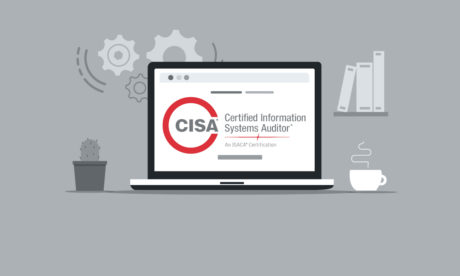
Introduction: Why Compliance is the Key to Business Sustainability
In today’s energy sector, regulatory compliance is no longer just a box to check—it’s a strategic imperative. With governments tightening policies on environmental impact, operational safety, and corporate governance, businesses that fail to adapt face significant financial, legal, and reputational risks.
Did you know? In 2023, energy firms worldwide paid over $10 billion in non-compliance penalties due to contract breaches, safety violations, and environmental infractions. Beyond the monetary costs, the damage to a company’s reputation can lead to loss of investor confidence, operational shutdowns, and long-term business instability.
Regulatory frameworks are designed to safeguard industry integrity and promote sustainable business practices. By understanding and integrating these regulations into everyday operations, energy companies can turn compliance into a powerful strategic advantage rather than a liability.
The Complex Landscape of Energy Regulations
Energy regulations are designed to:
- Protect the environment – Enforcing carbon emission limits, pollution controls, and sustainable energy initiatives.
- Ensure operational safety – Mandating workplace safety protocols, pipeline integrity, and disaster preparedness.
- Promote fair competition – Enforcing antitrust laws, market pricing regulations, and ethical trade practices.
- Enforce corporate accountability – Implementing strict financial reporting, anti-corruption measures, and governance policies.
The Challenge? Regulations are constantly evolving. Companies must stay ahead of policy shifts across multiple jurisdictions, balancing compliance with business growth.
Case in Point: In 2024, Valero Refining Company was fined $82 million by Bay Area air quality regulators for repeated violations related to toxic chemical releases at its Benicia refinery. Similarly, Cenovus Energy agreed to pay a $19 million civil penalty and invest $150 million in air quality improvements following alleged air pollution violations. These cases highlight the increasing regulatory scrutiny and the financial risks of non-compliance (cbsnews.com, morningstar.com).
Common Regulatory Challenges in the Energy Sector
- Frequent Policy Changes – Global energy laws rapidly adapt to climate change goals, digital transformation, and geopolitical shifts.
- Multi-Jurisdictional Complexity – Companies operating across borders must navigate overlapping and sometimes conflicting regulations.
- Financial & Legal Risks – Fines, lawsuits, and operational shutdowns are direct consequences of non-compliance.
- Cybersecurity & Data Protection – As the energy industry digitizes, businesses must comply with strict data security laws like GDPR and NERC-CIP.
- Contractual Risks – Poorly structured contracts lead to disputes, revenue loss, and regulatory penalties.
Solution? A proactive, data-driven compliance strategy that ensures your business is always one step ahead.
By leveraging technology and strategic planning, companies can mitigate compliance risks and enhance operational efficiency. The key lies in building a culture of compliance that integrates seamlessly into everyday operations.
Best Practices for Achieving Compliance Excellence
1. Stay Ahead of Regulatory Changes
- What to do: Assign a dedicated compliance team or partner with legal advisors to monitor industry updates.
- Why it matters: Proactive compliance management prevents costly last-minute adjustments and penalties.
2. Strengthen Contract Management for Regulatory Assurance
- What to do: Contracts define legal obligations—ensure they are structured to meet current and future regulatory requirements.
- Fact: Poor contract management accounts for up to 60% of legal disputes in the energy sector—a risk that can be avoided with smart contract solutions.
3. Embrace Compliance Technology & Automation
- What to do: Implement compliance tools that track policy updates, analyze risk exposure, and automate regulatory reporting.
- How it helps: Reduces human error, enhances reporting accuracy, and improves response time to new regulations.
4. Conduct Regular Compliance Audits & Employee Training
- What to do: Schedule annual compliance audits and provide ongoing training to ensure that employees are aware of regulatory updates.
- Why it’s essential: A well-informed workforce reduces the likelihood of compliance breaches and improves overall governance.
5. Develop a Risk Management Framework
What to do: Adopt a proactive risk assessment approach—don’t wait for a compliance failure to happen.
Key Benefit: Enhances business resilience and minimizes exposure to regulatory pitfalls.
Why Compliance is More Than Just Avoiding Penalties
Smart businesses don’t just meet compliance—they leverage it for growth. Here’s how:
- Attract investors – Regulatory-compliant businesses are seen as low-risk, high-trust investments.
- Gain market credibility – Clients and partners prefer businesses with a strong compliance record.
- Boost operational efficiency – Compliance-driven processes lead to better resource management and cost savings.
Bonus Insight: Companies with structured compliance programs experience 47% fewer operational disruptions compared to those with reactive approaches.
Final Thoughts
Regulatory compliance doesn’t have to be a burden—it can be your competitive edge. With the right strategy, tools, and advisory support, your business can thrive in a complex regulatory landscape.
What’s your biggest compliance challenge? Let’s discuss this in the comments below!






0 responses on "Mastering Regulatory Compliance in the Energy Industry: Turning Challenges into Strategic Advantages."